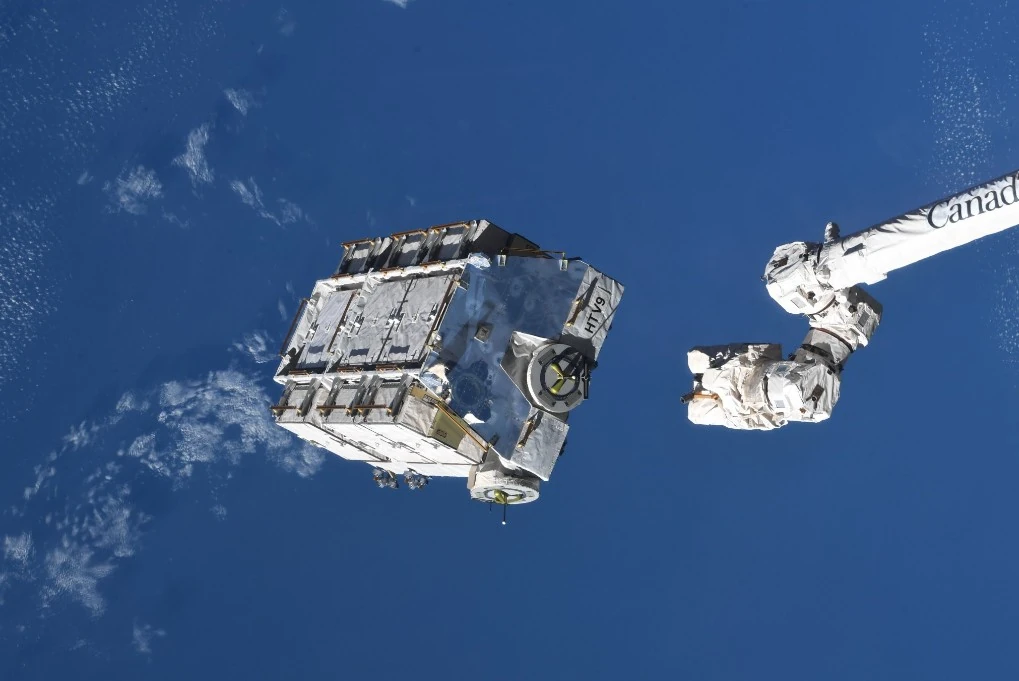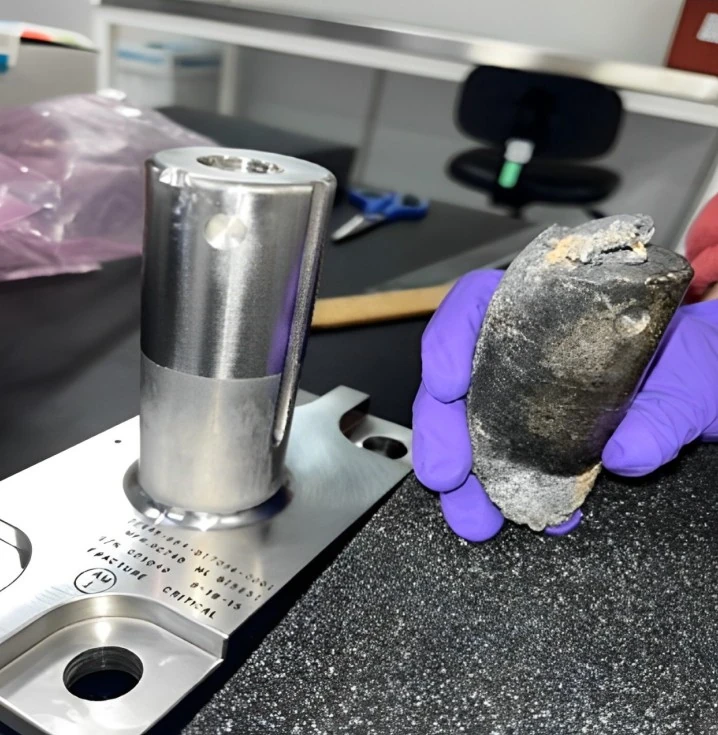In March 2021, NASA ground controllers deployed the International Space Station’s (ISS) robotic arm to discard a cargo pallet (EP-9) containing obsolete nickel hydride batteries, following upgrades to lithium-ion units. This operation set a record for the heaviest item jettisoned from the ISS. While the entire pallet was expected to disintegrate before reaching Earth’s surface, a fragment of this hardware survived atmospheric re-entry and struck a residence in Naples, Florida, in March 2024.
A significant incident occurred last month when a piece of space debris, jettisoned from the International Space Station in 2021 as part of its power system upgrade, unexpectedly impacted a home in Naples, Florida.
The debris, a 0.7 kg (1.6 pounds) stanchion made from Inconel, represents the first case of such a large mass surviving the atmospheric re-entry since the station began operations.
Originally, the discarded hardware, weighing approximately 2 630 kg (5 800 pounds), included aging nickel hydride batteries replaced by more efficient lithium-ion batteries.
NASA spokesperson Leah Cheshier highlighted in March 2021 that this jettisoned object was the heaviest ever released from the ISS, surpassing the mass of the Early Ammonia Servicing System tank discarded during the STS-118 mission in 2007.

The EP-9 equipment pallet re-entered Earth’s atmosphere at 19:29 UTC on March 8 over the Gulf of Mexico between Cancun and Cuba. “This was within the previous prediction window but a little to the northeast of the ‘most likely’ part of the path. A couple of minutes later reentry and it would have reached Ft Myers,” astronomer Jonathan McDowell said.
However, little did we know at the time that a piece of the object survived and hit a home in Naples, Florida.
Hello. Looks like one of those pieces missed Ft Myers and landed in my house in Naples.
Tore through the roof and went thru 2 floors. Almost his my son.
Can you please assist with getting NASA to connect with me? I’ve left messages and emails without a response. pic.twitter.com/Yi29f3EwyV— Alejandro Otero (@Alejandro0tero) March 15, 2024
After learning about the unexpected debris impact, NASA cooperated with the affected homeowner to secure and analyze the piece.
The examination at Kennedy Space Center confirmed the debris as a stanchion previously used to mount batteries on the cargo pallet. Measuring 10 cm (4 inches) in height and 4 cm (1.6 inches) in diameter, this object’s survival after re-entry prompted NASA to initiate a thorough investigation into the incident.
The owner of the impacted home, Alejandro Otero, told WINK television he was on vacation when the object impacted his home and was told by his son what had happened. Otero came home early to check on the house, finding the object had ripped through his ceiling and torn up the flooring.
“It was a tremendous sound. It almost hit my son. He was two rooms over and heard it all,” Otero said.
“I was shaking. I was completely in disbelief. What are the chances of something landing on my house with such force to cause so much damage,” Otero said. “I’m super grateful that nobody got hurt.”


The space agency plans to delve deeply into the jettison procedures and the models predicting debris behavior during re-entry. These engineering models are crucial for understanding how objects disintegrate when re-entering Earth’s atmosphere and are regularly refined to enhance safety measures.
This incident will likely influence future protocols and safety analyses to prevent similar occurrences.
References:
1 NASA Completes Analysis of Recovered Space Object – NASA Space Station – April 15, 2024
2 Object from the sky crashes through Naples family’s ceiling and floor – WINK – March 15, 2024
Featured image credit: NASA
Widespread record floods hit parts of Russia, flooding over 10 500 homes
Tuesday, April 9, 2024
Exceptionally intense Saharan dust episode over Europe degrading air quality, suggesting changes in atmospheric circulation patterns
Tuesday, April 9, 2024
Rare M4.8 earthquake hits New Jersey — the strongest since 1783, U.S.
Saturday, April 6, 2024
G3 – Strong geomagnetic storm predicted for March 25; 19 M-class flares in 25 hours
Sunday, March 24, 2024
Extremely heavy rains hit Rio de Janeiro and Espírito Santo, causing destructive floods and landslides, Brazil
Saturday, March 23, 2024
6 months’ worth of rain cuts off Western Australia, leaves 7 people missing
Tuesday, March 12, 2024
Largest object ever jettisoned from ISS to make uncontrolled re-entry this week
Friday, March 8, 2024